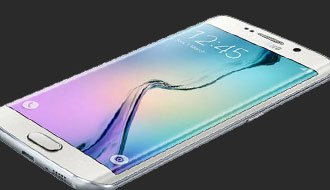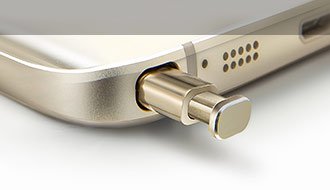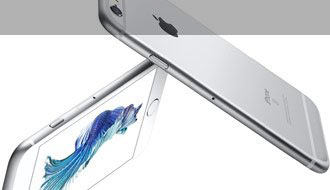Testing the da Vinci Jr 3D printer
Adam Turner tests the world's most affordable 3D printer
PT2M9S 620 349The da Vinci Jr makes 3D printing more affordable than ever, but it's a long way from the Star Trek replicator-style precision instrument you might be dreaming of.
Not so long ago 3D printers were the stuff of science fiction, so the thought of picking one up at the shops for less than $600 is pretty amazing. Touted as the world's "most affordable" 3D printer, XYZprinting's da Vinci Jr is specifically targeted at educators, families and hobbyists – making an effort to simplify the cumbersome 3D printing process for beginners.
Appear out of thin air

XYZprinting's da Vinci Jr makes 3D printing affordable, but it sacrifices a lot in return. Photo: Adam Turner
The da Vinci Jr prints objects up to 150 millimetres tall, wide and deep – a little larger than the footprint of a CD case. They don't need to be solid objects, in fact even when you print a solid object it has a honeycomb structure inside to reduce the amount of plastic you use while ensuring structural integrity.
Unlike some more expensive 3D printers, the da Vinci Jr only lets you print using one material and only in one colour at a time. It relies on XYZprinting's spools of PLA (Polylactic acid) plastic filament. The printer feeds the plastic string into the print head, called the extruder, where it's melted and deposited in tiny droplets onto the print bed.
The extruder moves from side to side on an arm, while the print bed moves back and forth. Over time the arm slowly rises as your creation materialises.

The printer uses a honeycomb internal structure to save plastic, which costs $60 per spool. Photo: Adam Turner
Unlike the other da Vinci 3D printer models you don't have the option of using ABS (Acrylonitrile butadiene styrene) plastic, which can be more difficult to work with but tends to be favoured by people looking to print components rather than just models. ABS allows for more precise prints than PLA and it's also a bit more sturdy, which can be important if you're printing parts that will be put to good use.
If you want the choice of printing with PLA or ABS plastic then you'll need to spend at least another $200 for the next model up, the da Vinci 1.0A.
Spools of PLA for the da Vinci Jr come in a range of 10 colours and they'll set you back around $60 for 600 grams. As with traditional printers, they screw you on the consumables. XYZprinting uses RFID tags in the spools to detect when they're empty so you can't refill them yourself – the printer refuses to print unless it can detect a valid RFID tag.

A Volkswagon Beetle, downloaded from XYZprinting's gallery and printed using the da Vinci Jr. Photo: Adam Turner
The supplied software also employs DRM when talking to the printer. As with many proprietary systems designed to lock you into expensive consumables, this has turned into a cat and mouse game between the manufacturer and modders.
Keep it simple, supposedly
It takes about an hour to unpack the printer and get it running. Feeding the plastic from the spool into the extruder is pretty straightforward, you just need to wait for it to warm up.

The Volkswagen Beetle design, downloaded from the XYZ gallery and loaded into XZYware. Photo: Adam Turner
You need to remove the plastic string from the extruder when you're done to avoid clogging, although I still needed to run the nozzle cleaning process several times. One time it jammed in the middle of printing a model and I returned hours later to find nothing but the legs of the Eiffel Tower.
Unlike most 3D printers the da Vinci Jr supposedly doesn't require calibration, but that's simply not true. For starters it's possible to adjust the Z offset – the height of the nozzle above the print bed. My review unit was set to 1.2 mm when it arrived but I believe the default is lower. If you find the printer's gears are clicking or the nozzle is scraping against the print bed then you'll need to adjust the Z offset.
On the level

The outer ring of the planetary gears downloaded from Thingiverse prints slightly too small using the da Vinci Jr. Photo: Adam Turner
While you're at it you'll also want to check whether the print bed is level, this unit was off slightly and there are reports of others shipping the same. Manually adjusting the arm which holds the extruder is a nightmare. This all makes a mockery of XYZprinting's calibration-free claims.
There are no knobs to adjust the printer as with some other da Vinci models. Instead you're expected to use a T10 torx screwdriver to loosen three screws on the left of the arm so you can manually adjust it make it level with the print bed.
There isn't a T10 torx screwdriver in the box, you're not even told it's a T10 torx screw and it's impossible to get a close look at it because it's deep inside the print chamber. Good luck loosening those screws, they seem to be glued and you'll probably need to swap the screwdriver for a ratchet. Even more frustrating, when you finally loosen those screws on the left the arm still doesn't want to budge.

A failed attempted to print Tetris cookie cutters – objects in the front left corner broke free from the print bed mid-print after I raised the Z offset to stop the nozzle scrapping at the rear right. Photo: Adam Turner
This becomes a moot point once you look closely and realise that the arm has some give in it, because it's not tightly attached to anything on the right side. Press it up from the bottom and it moves a few millimetres – the first sign that this isn't the 3D printer for people who really care about precision. This video gives you an idea what you're in for.
To make matters worse I realised that the print bed is on a tilt, with the back right corner slightly raised. It becomes obvious when you print objects with a very large flat base, like cookie cutters, when the nozzle only scrapes in one corner of the print bed. There is no way to adjust this short of unscrewing the print bed and wedging things under it in an effort to get it level. When you're adjusting the Z axis you need to manually push around the print bed to check that none of the corners are scraping.
XYZprinting boasts about this printer's ease of use, insisting that it doesn't require calibration, but this is misleading customers. Omitting the calibration features found in other da Vinci models – presumable to keep down the price – means that even children will soon grow frustrated with its limitations and not understand the cause of the problem.

A second attempt to print Tetris cookie cutters was more successful, using XYZware's raft option to add a base to the print which easily peels away. Photo: Adam Turner
Unfortunately you're unlikely to discover these issues, or figure out the solutions, until you start trawling the forums for answers as to why your 3D prints lack precision. One workaround for the "X-axis sag" issue is to print a small part to wedge under the print arm beam to level it out, which seems far from scientific.
Made by design
When you've done your best to calibrate the da Vinci Jr you'll need something to print. There's no shortage of designs to download thanks to the vibrant online 3D printing community, whether from XYZprinting's gallery or sites like Thingiverse (run by rival 3D printer manufacturer MakerBot).
The da Vinci Jr comes with XYZware software for Windows or Mac, which is rather clunky but can print industry standard .stl files along with XYZprinting's own .3w format. It's also possible to design your own objects, you'll even find free online tools like Tinkercad and Google SketchUp.
Alternatively you might invest in a 3D scanner to digitise real-life objects. XYZprinting sells a handheld 3D scanner for US$199 and there are plenty of other options. Otherwise you could look to the more expensive da Vinci 1.0 AiO printer which has a built-in scanner.
Time to materialise
When it comes time to print the XYZware software offers several quality options, with the ability to adjust the density as well as the thickness of the printing layers. Beginners shouldn't need to change these settings when printing trinkets.
Despite XYZprinting's promises, the da Vinci Jr is far from a plug and play solution. There's a lot of trial and error involved and you'll spend plenty of time trawling the forums in search of answers – learning a lot about the frustrations of 3D printing and the limitations of the da Vinci Jr along the way.
Unlike most 3D printers, the print bed in the da Vinci Jr isn't heated. A heated print bed keeps the plastic warm so it doesn't warp. This is the key reason why you're restricted to printing with PLA plastic and not ABS.
Without a heated print bed in the da Vinci Jr you can run into trouble when printing tall, thin objects – they can distort or, worse yet, break free from the print bed and be dragged around by the extruder.
To be fair I only encountered this once while printing Tetris cookie cutters – a spectacular fail after rasing the Z axis too far, in order to stop the nozzle scraping against the print bed in the rear right corner.
It's a common problem and a popular low-tech solution is to spread a little glue or hairspray on the print bed to keep your object in place. Alternatively the XYZware software can add a "raft" to your print, as I did in my second attempt at printing Tetris cookie cutters – a base underneath your model which you can trim away after printing.
I also encountered the opposite problem. The lack of a heated print bed makes it very difficult to pry off large flat objects. It would be very easy to snap delicate objects while trying to remove them.
The printer comes with a few squares of fancy masking tape to cover the print bed, so objects don't stick to the glass, but it's not as effective as you might hope. Even after applying ice to flat objects like the Volkswagen Beetle, and working around the edges with a Stanley knife, it still requires so much force to remove some objects with the supplied scraper that I was seriously concerned about slipping and slashing my arm or damaging the printer.
XYZprinting's tech support suggested recalibrating the Z axis offset to raise the nozzle but it didn't help with this issue. While the da Vinci Jr claims to be family-friendly, children will need to call on a responsible adult for help – I certainly wouldn't let my children try to pry objects off the print bed with a sharp knife.
Not a perfect fit
The novelty of printing toys and trinkets soon wears off, especially considering that you'll often get better results at a fraction of the price using something like Sculpey coloured polymer baking clay.
To me a 3D printer makes more sense for printing components – specialised gears, molds, shape cutters, chassis parts or custom Lego blocks, the kinds of things which you can't buy off the shelf or easily make with clay. At this point you're once again hampered by the inability to print with ABS plastic, which produces more precise results than PLA. You're also at the mercy of the shonky print bed calibration.
Precision becomes your highest priority once you're printing parts designed to fit together. There's little to get excited about in XYZprinting's gallery, it's full of trinkets and novelties. Thingiverse is a much better source of technical 3D models, but unfortunately complicated designs downloaded from Thingiverse using the standard .stl file format don't tend to print as planned using the da Vinci Jr.
The planetary gears from Thingiverse don't fit together even when printed at the da Vinci Jr's highest quality of 0.1mm resolution. Meanwhile my Lego blocks don't quite connect to store-bought blocks. Two printed Lego blocks barely fit with each other. The printer also struggles with fine detail on models like the Eiffel tower, with the fine lattice work of the legs coming out rather mangled. Objects which don't require high precision, like cookie cutters, were much more successful.
Printing cookie cutters I finally started to find some enthusiasm for 3D printing, because I'd finally discovered something practical to make which the printer could handle. You'll find lots of cool designs in Thingiverse, plus cookie cutters are perhaps a good starting point if you're looking to design your own 3D models.
Trawling the forums in search of answers for my precision issues I found that some people tweak Thingiverse files (which are tested for MakerBot printers) before using them with da Vinci printers. I tried running the Thingiverse planetary gears file through Microsoft's online Netfabb 3D model repair tools, as suggested, but this didn't fix the problem. This shouldn't be necessary with industry standard .stl files, so I started looking at calibrating the printer and discovered a bag of hurt.
So what's the verdict?
It's mesmerising to watch 3D objects slowly come to life but don't expect miracles from the budget member of the da Vinci line-up. Claims of zero calibration are misleading and actually make life harder by giving you a false sense of confidence in the printer's abilities. The closer you look the more you realise that the da Vinci Jr is not a precision instrument straight out of the box.
3D printing technology is still at the hobbyist stage, so don't expect perfect one-click results from this or any 3D printer. The process is far from foolproof and there can be a steep learning curve, especially when precision is important. Don't sign up for 3D printing unless you're prepared to invest time and effort into getting decent results. You'll also need a practical use for a 3D printer, beyond printing novelty trinkets, in order to get long-term value from your investment.
The da Vinci Jr is great for dipping your toe in the water, but it makes too many sacrifices by forgoing a heated print bed, support for ABS plastic and decent calibration tools. It's fine for producing trinkets but if you're dreaming of printing with precision then you'll need to spend a lot of time fighting with this budget 3D printer.































6 comments so far
New user? Sign up
Make a comment
You are logged in as [Logout]
All information entered below may be published.
Thank you
Your comment has been submitted for approval.
Comments are moderated and are generally published if they are on-topic and not abusive.